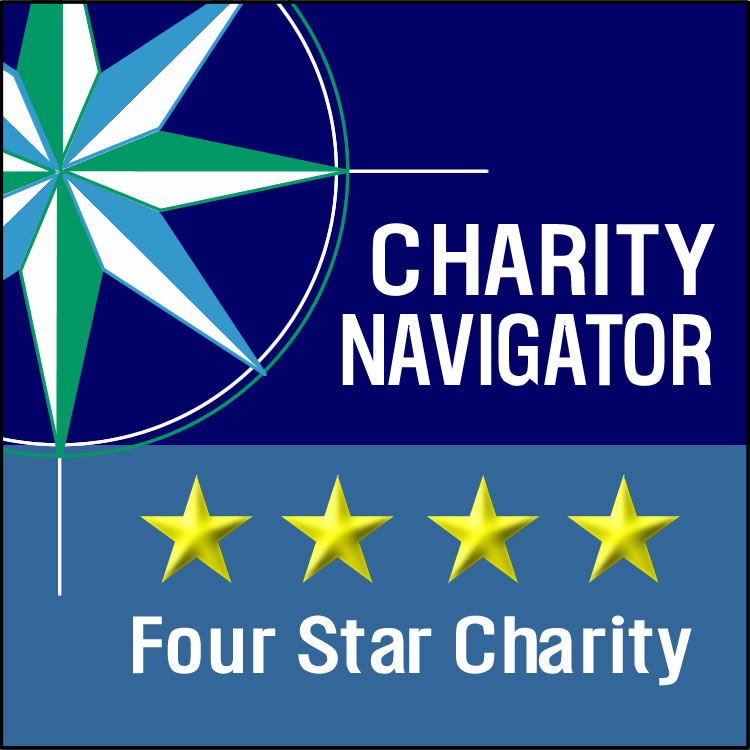First Legally Blind Athlete to Compete in the Olympic Games
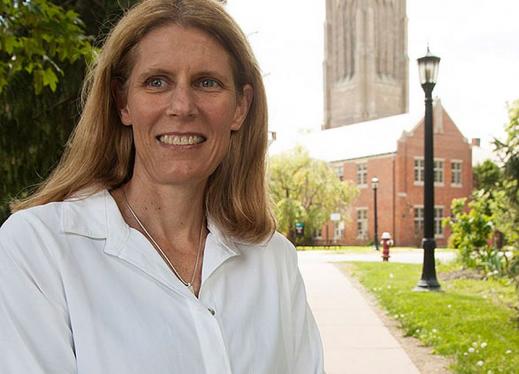 Marla Runyan made history by becoming the first legally blind athlete ever to compete in the Olympic Games in Sydney in 2000. She made it to the finals, where she placed eighth in the 1,500 meters, the best finish by an American woman in that event. Beginning in 2001, she won three straight US national championships in the 5,000 meters.
Marla Runyan made history by becoming the first legally blind athlete ever to compete in the Olympic Games in Sydney in 2000. She made it to the finals, where she placed eighth in the 1,500 meters, the best finish by an American woman in that event. Beginning in 2001, she won three straight US national championships in the 5,000 meters.In 2002 she won the national championships in the road 5K and 10K, and also married her coach Matt Lonergan that year. Marla went on to compete in the 2004 Olympic Games in Athens.
In 2002 and 2006, Marla was awarded USATF's "Runner of the Year" honor. She held IPC world records or world bests in the T13 classification in an amazing 10 events.
At age 10, Marla was diagnosed with Stargardt disease. At that point, many around her, including her parents, told her she "couldn't", which merely motivated her to show that she "could!"
Please reach out to SDCB to learn more about our vision rehabilitation programs and services,
“First legally blind athlete to compete in the Olympic Games”

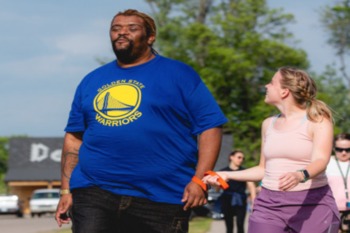 Robert Parsons is an inspiration to blind and low vision communities. Parsons has earned two master's degrees from Western Michigan University. He has come a long way since 2014 when a traumatic brain injury left Parsons living with blindness.
Robert Parsons is an inspiration to blind and low vision communities. Parsons has earned two master's degrees from Western Michigan University. He has come a long way since 2014 when a traumatic brain injury left Parsons living with blindness. One hundred and 40 years ago a stroll down the streets of Seoul (South Korea) would have been a surreal experience. You would rarely see a woman walking the streets most of the day. However, you may run into the fairer sex at night because men, with very few exceptions, were confined to their homes during a curfew hour.
One hundred and 40 years ago a stroll down the streets of Seoul (South Korea) would have been a surreal experience. You would rarely see a woman walking the streets most of the day. However, you may run into the fairer sex at night because men, with very few exceptions, were confined to their homes during a curfew hour.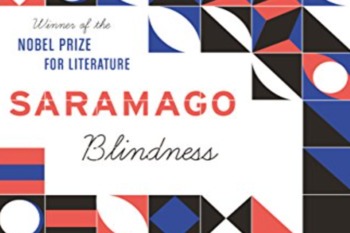 The last year and a half has been extremely challenging. All of us were forwarded to ask hard questions about how we were going to survive in the midst of chaos. It was perhaps most challenging for those living with visual impairments. People living with blindness had to quickly adapt to life without access to many of the resources they once depended upon. The hats of the sighted community should go off to everyone living with a disability during these challenging times.
The last year and a half has been extremely challenging. All of us were forwarded to ask hard questions about how we were going to survive in the midst of chaos. It was perhaps most challenging for those living with visual impairments. People living with blindness had to quickly adapt to life without access to many of the resources they once depended upon. The hats of the sighted community should go off to everyone living with a disability during these challenging times.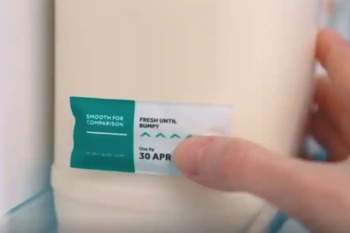 Helping blind people know when their food has gone bad is important to a company called Mimica. Soon blind people could have an easier way to discern if their food has spoiled because Mimica created touch-sensitive sensors to tell you how fresh your food is. The project started as a way to help blind people.
Helping blind people know when their food has gone bad is important to a company called Mimica. Soon blind people could have an easier way to discern if their food has spoiled because Mimica created touch-sensitive sensors to tell you how fresh your food is. The project started as a way to help blind people.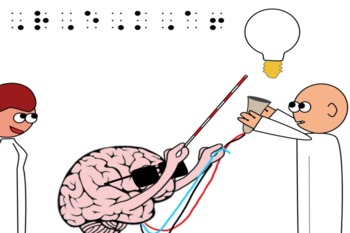 A team of researchers from several universities is working on a brain implant that could restore vision to blind people. If successful, blind people could get their sight back partially.
A team of researchers from several universities is working on a brain implant that could restore vision to blind people. If successful, blind people could get their sight back partially. Winston Chen, a developer, designed an app for people with visual impairment while living in the Arctic Circle. His Voice Dream Reader won him the prestigious Apple Design Award. Voice Dream Reader supports text-to-speech as well as visual reading for blind people or those living with low vision and dyslexia.
Winston Chen, a developer, designed an app for people with visual impairment while living in the Arctic Circle. His Voice Dream Reader won him the prestigious Apple Design Award. Voice Dream Reader supports text-to-speech as well as visual reading for blind people or those living with low vision and dyslexia.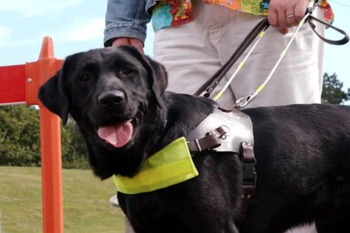 New research suggests that blind people can benefit from receiving instruction on echolocation. What’s more, people with vision loss can learn echolocation with just a small amount of training. Click-based echolocation helps individuals judge spaces and improve their navigation skills.
New research suggests that blind people can benefit from receiving instruction on echolocation. What’s more, people with vision loss can learn echolocation with just a small amount of training. Click-based echolocation helps individuals judge spaces and improve their navigation skills.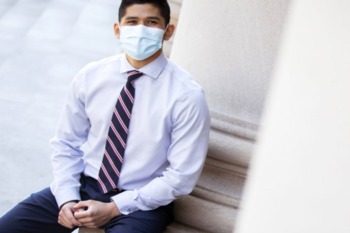 Lawson Ung graduated from the Harvard T.H. Chan School of Public Health’s master of science program in epidemiology and he plans to return in the fall to begin a Ph.D. program. Ung is interested in the intersection between global poverty and blindness. Ung sees the relationship between eye injury, poverty, and loss of human potential as a call to action.
Lawson Ung graduated from the Harvard T.H. Chan School of Public Health’s master of science program in epidemiology and he plans to return in the fall to begin a Ph.D. program. Ung is interested in the intersection between global poverty and blindness. Ung sees the relationship between eye injury, poverty, and loss of human potential as a call to action. Visually impaired students are often discouraged from taking science courses because they’re considered too dangerous or too visual for blind people. Bryan Shaw, a biochemist and biophysicist at Baylor University, has devised an ingenious method for helping blind students study chemistry.
Visually impaired students are often discouraged from taking science courses because they’re considered too dangerous or too visual for blind people. Bryan Shaw, a biochemist and biophysicist at Baylor University, has devised an ingenious method for helping blind students study chemistry.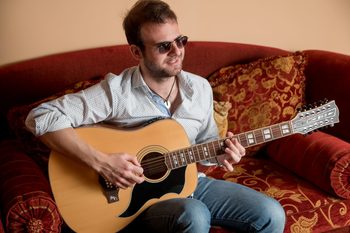 Michele Romeo of Sicily has been playing guitar since he was four years old. He was quickly identified as being a musical prodigy. Unfortunately, Romeo was diagnosed with a rare ocular disease at age 13, which would rob him of his sight one day and maybe his ability to shine musically. However, the Sicilian musician overcame his visual impairment and produced an album in 2012, garnering him critical acclaim in Sicily.
Michele Romeo of Sicily has been playing guitar since he was four years old. He was quickly identified as being a musical prodigy. Unfortunately, Romeo was diagnosed with a rare ocular disease at age 13, which would rob him of his sight one day and maybe his ability to shine musically. However, the Sicilian musician overcame his visual impairment and produced an album in 2012, garnering him critical acclaim in Sicily.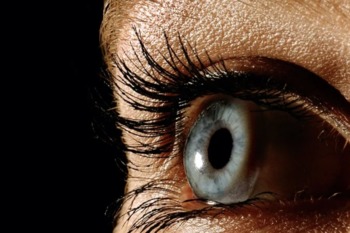 Scientists can now partially restore vision in some blind people thanks to a new treatment. A new gene therapy is helping blind people see, particularly those suffering from retinitis pigmentosa.
Scientists can now partially restore vision in some blind people thanks to a new treatment. A new gene therapy is helping blind people see, particularly those suffering from retinitis pigmentosa.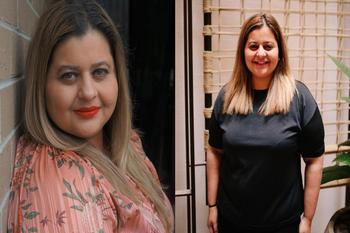 Sayali Apte was 23 years old when her life changed irreversibly. A terrible accident led to permanent blindness for the young entrepreneur. The loss of vision turned her life upside down and severely impacted her mental health. One day, Apte had an epiphany: she could not restore her sight, but she could choose to persevere. Adapting to life with blindness was a process.
Sayali Apte was 23 years old when her life changed irreversibly. A terrible accident led to permanent blindness for the young entrepreneur. The loss of vision turned her life upside down and severely impacted her mental health. One day, Apte had an epiphany: she could not restore her sight, but she could choose to persevere. Adapting to life with blindness was a process.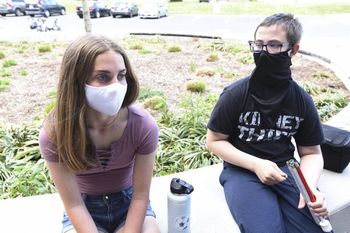 Sighted people can easily take for granted that they have no problem deciding what to eat at a restaurant. Menus, after all, cater to people with healthy eyes. You might imagine that the same is not true for blind people and those living with vision loss.
Sighted people can easily take for granted that they have no problem deciding what to eat at a restaurant. Menus, after all, cater to people with healthy eyes. You might imagine that the same is not true for blind people and those living with vision loss. More and more software companies are changing their platforms to make it easier for people with disabilities to take advantage of content and strengthen their web presence. Wix, an Israel-based software company, provides cloud-based web development services for those who do not have a background in web design. The Wix Accessibility Wizard scans a website to find potential issues for people with disabilities and impairments, such as individuals who are blind and use screen-reader technology, as well as those who are colorblind. DIY web design platforms can now make websites making more inclusive.
More and more software companies are changing their platforms to make it easier for people with disabilities to take advantage of content and strengthen their web presence. Wix, an Israel-based software company, provides cloud-based web development services for those who do not have a background in web design. The Wix Accessibility Wizard scans a website to find potential issues for people with disabilities and impairments, such as individuals who are blind and use screen-reader technology, as well as those who are colorblind. DIY web design platforms can now make websites making more inclusive.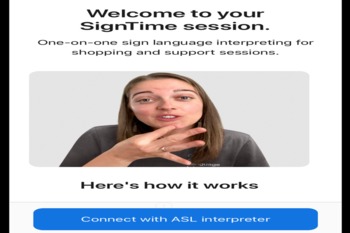 People living with mobility, vision, hearing, and cognitive disabilities can benefit from the latest software update from Apple. The company behind the sleek technological devices that we are all too familiar with believes that accessibility is a human right. iPad will support third-party eye-tracking hardware to make using the devices easier for blind and vision loss communities. Apple's VoiceOver screen reader will become more intelligent by using on-device intelligence to explore objects within images. This month, SignTime was launched, a tool that enables users to communicate with AppleCare and Retail Customer Care by using American Sign Language (ASL) in the US, British Sign Language (BSL) in the UK, or French Sign Language (LSF) in France.
People living with mobility, vision, hearing, and cognitive disabilities can benefit from the latest software update from Apple. The company behind the sleek technological devices that we are all too familiar with believes that accessibility is a human right. iPad will support third-party eye-tracking hardware to make using the devices easier for blind and vision loss communities. Apple's VoiceOver screen reader will become more intelligent by using on-device intelligence to explore objects within images. This month, SignTime was launched, a tool that enables users to communicate with AppleCare and Retail Customer Care by using American Sign Language (ASL) in the US, British Sign Language (BSL) in the UK, or French Sign Language (LSF) in France. Of late, the company behind the iconic doll known around the world as Barbie has been releasing a “Inspiring Women” line of dolls. The lineup includes: Eleanor Roosevelt, Dr. Maya Angelou, Billie Jean King, Ella Fitzgerald, Florence Nightingale, Susan B. Anthony, Amelia Earhart, Katherine Johnson, Frida Kahlo, Rosa Parks, and Sally Ride.
Of late, the company behind the iconic doll known around the world as Barbie has been releasing a “Inspiring Women” line of dolls. The lineup includes: Eleanor Roosevelt, Dr. Maya Angelou, Billie Jean King, Ella Fitzgerald, Florence Nightingale, Susan B. Anthony, Amelia Earhart, Katherine Johnson, Frida Kahlo, Rosa Parks, and Sally Ride.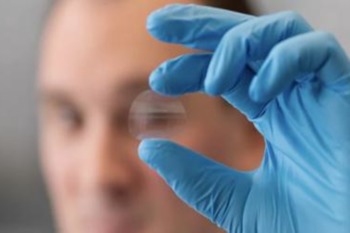 Every day, researchers work tirelessly to combat vision loss and blindness. Scores of studies are underway, all with the hope of restoring vision to blind people. One such research project, led by Dr. Matthew Griffith, of the Australian Centre for Microscopy & Microanalysis and the School of Aerospace, Mechanical and Mechatronic Engineering, involves the printing of artificial retinas. The retina is the thin layer of tissue lining the back of the eye which receives light, converts it into neural signals, and sends the transmissions to the brain for processing.
Every day, researchers work tirelessly to combat vision loss and blindness. Scores of studies are underway, all with the hope of restoring vision to blind people. One such research project, led by Dr. Matthew Griffith, of the Australian Centre for Microscopy & Microanalysis and the School of Aerospace, Mechanical and Mechatronic Engineering, involves the printing of artificial retinas. The retina is the thin layer of tissue lining the back of the eye which receives light, converts it into neural signals, and sends the transmissions to the brain for processing.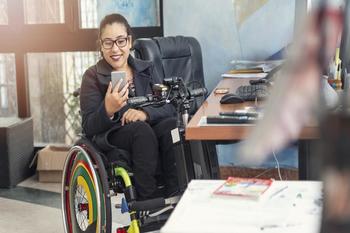 Tomorrow is Global Accessibility Awareness Day, a time to encourage mobile providers to fully grasp the upside of designing products with inclusion and accessibility at the forefront. Technology must cater to the blind, deaf, and physically impaired community. It’s worth remembering that the typewriter, the predecessor of computer keyboards, was invented to help blind people type. Remote controls were designed to allow the physically impaired people access to television.
Tomorrow is Global Accessibility Awareness Day, a time to encourage mobile providers to fully grasp the upside of designing products with inclusion and accessibility at the forefront. Technology must cater to the blind, deaf, and physically impaired community. It’s worth remembering that the typewriter, the predecessor of computer keyboards, was invented to help blind people type. Remote controls were designed to allow the physically impaired people access to television.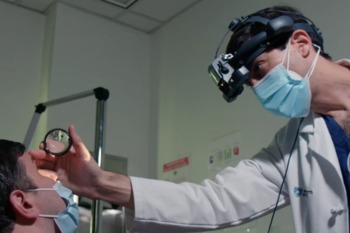 CRISPR is a gene-editing technique allowing scientists to make precise changes in DNA. The method has shown promise for blood disorders and is being tested for several forms of cancer. Researchers believe that CRISPR can help in fighting diseases and help people suffering from rare genetic disorders.
CRISPR is a gene-editing technique allowing scientists to make precise changes in DNA. The method has shown promise for blood disorders and is being tested for several forms of cancer. Researchers believe that CRISPR can help in fighting diseases and help people suffering from rare genetic disorders.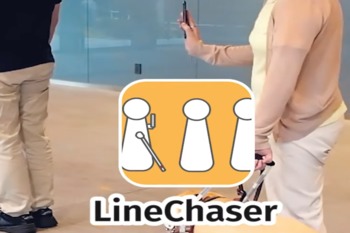 With the rollout of the COVID-19 vaccine, there is hope on the horizon regarding the pandemic. However, there is still a need to keep a safe distance between you and people that are not part of your inner circle. What's more, it can be challenging for blind and visually impaired people to know that they are at least 6-feet away from others, especially when waiting in line.
With the rollout of the COVID-19 vaccine, there is hope on the horizon regarding the pandemic. However, there is still a need to keep a safe distance between you and people that are not part of your inner circle. What's more, it can be challenging for blind and visually impaired people to know that they are at least 6-feet away from others, especially when waiting in line.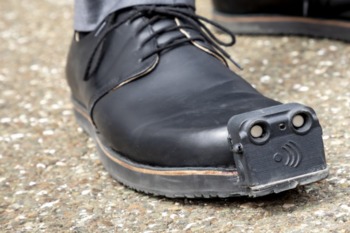 Advancements in technology could one day make the white cane obsolete. In the past, we've covered stories about
Advancements in technology could one day make the white cane obsolete. In the past, we've covered stories about  Ingrid Barnes, 27, from Sydney, Australia, uses social media to discuss her experience with blindness. Barnes has retinitis pigmentosa, a genetic condition that can cause severe vision loss. Her condition has left her with about 3.5 percent field of vision in well-lit environments.
Ingrid Barnes, 27, from Sydney, Australia, uses social media to discuss her experience with blindness. Barnes has retinitis pigmentosa, a genetic condition that can cause severe vision loss. Her condition has left her with about 3.5 percent field of vision in well-lit environments.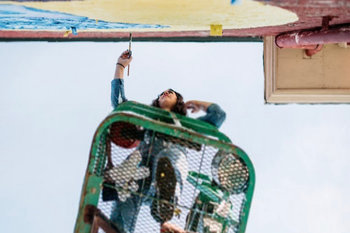 An artist in Louisville, Kentucky, is creating art installations that highlight the history of the Clifton neighborhood. What's unique about the project by artist Liz Richter is that she is painting visually impaired-accessible artwork. Richter got inspiration for her art project from students at the Kentucky School for the Blind (KSB).
An artist in Louisville, Kentucky, is creating art installations that highlight the history of the Clifton neighborhood. What's unique about the project by artist Liz Richter is that she is painting visually impaired-accessible artwork. Richter got inspiration for her art project from students at the Kentucky School for the Blind (KSB).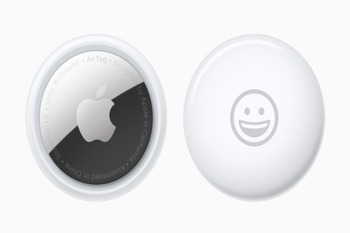 Everyone misplaces their belongings from time to time. Apple has created a product that could help all of us keep track of things that are easily misplaced. Devices known as AirTags are Bluetooth trackers. Using your iPhone, you can easily track down a lost item. What's more, Apple AirTags could help blind people. In conjunction with the iPhone's VoiceOver accessibility features, AirTags could help blind people keep track of important objects.
Everyone misplaces their belongings from time to time. Apple has created a product that could help all of us keep track of things that are easily misplaced. Devices known as AirTags are Bluetooth trackers. Using your iPhone, you can easily track down a lost item. What's more, Apple AirTags could help blind people. In conjunction with the iPhone's VoiceOver accessibility features, AirTags could help blind people keep track of important objects.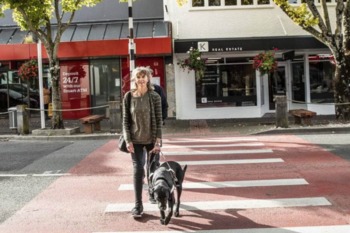 Sue Fraser’s eyesight has been diminishing for some time. Finally she found the courage to reach out for help for her visual impairment and she said it was the “best thing” she ever did. Last Christmas, Fraser received a call that she waited a long time for—two years. The phone call came from a dog trainer who told her that her visual impairment would be aided by a guide dog. She was getting “a little black lab called Rylie”.
Sue Fraser’s eyesight has been diminishing for some time. Finally she found the courage to reach out for help for her visual impairment and she said it was the “best thing” she ever did. Last Christmas, Fraser received a call that she waited a long time for—two years. The phone call came from a dog trainer who told her that her visual impairment would be aided by a guide dog. She was getting “a little black lab called Rylie”.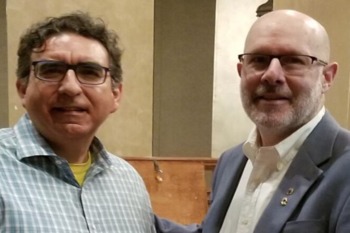 The National Braille Press (NBP) has a long history of helping the blind community; it was founded in 1927 by Francis Lerardi, who lost his sight in 1898 at 12 years old. The NBP offers programs that empower the blind and visually impaired.
The National Braille Press (NBP) has a long history of helping the blind community; it was founded in 1927 by Francis Lerardi, who lost his sight in 1898 at 12 years old. The NBP offers programs that empower the blind and visually impaired.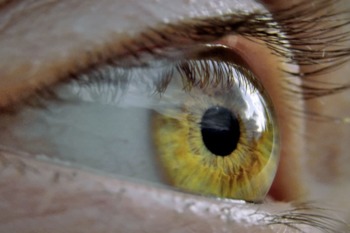 A bioelectronics company has received the HealthTech Award 2020 for its bionic vision Prima System. Pixium Vision SA’s bionic eye helps blind people see. The Prima System could help blind people lead more independent lives. It elicits functional artificial vision in the form of light perception replacing partially the natural central vision loss.
A bioelectronics company has received the HealthTech Award 2020 for its bionic vision Prima System. Pixium Vision SA’s bionic eye helps blind people see. The Prima System could help blind people lead more independent lives. It elicits functional artificial vision in the form of light perception replacing partially the natural central vision loss. A group of teenagers from Phoenix, AZ, are the stars of a new documentary called "Ocean of Obstacles." The film is about the teens' remarkable sailing journey across the Caribbean Sea. What novel about the expedition is the fact that teenagers navigated without vision. The teenagers sailed 800 miles despite vision loss and learned a lot about themselves along the way. "Ocean of Obstacles" should be an inspiration for all, as it shows the genuinely remarkable feats blind people can accomplish.
A group of teenagers from Phoenix, AZ, are the stars of a new documentary called "Ocean of Obstacles." The film is about the teens' remarkable sailing journey across the Caribbean Sea. What novel about the expedition is the fact that teenagers navigated without vision. The teenagers sailed 800 miles despite vision loss and learned a lot about themselves along the way. "Ocean of Obstacles" should be an inspiration for all, as it shows the genuinely remarkable feats blind people can accomplish.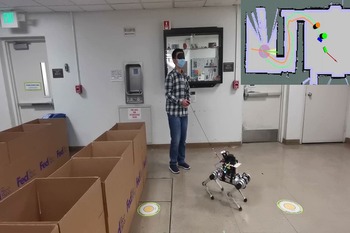 Yesterday we shared a story about a new
Yesterday we shared a story about a new 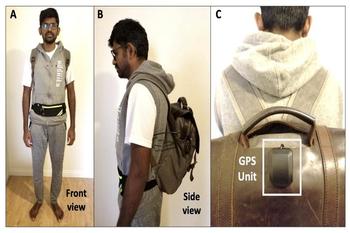 Guide dogs are instrumental for many visually impaired people in navigating their way through the world. White canes also help blind men and women detect obstacles that may present challenges. In the near future, a backpack could be the chosen means of navigating for people with diminished fields of vision. The MIRA Guidance System for the Blind, a smart backpack powered by Intel for visually impaired people, is being tested.
Guide dogs are instrumental for many visually impaired people in navigating their way through the world. White canes also help blind men and women detect obstacles that may present challenges. In the near future, a backpack could be the chosen means of navigating for people with diminished fields of vision. The MIRA Guidance System for the Blind, a smart backpack powered by Intel for visually impaired people, is being tested. In Rhode Island, blind and visually impaired students protested in front of the House Chambers at the Veterans Memorial Auditorium, calling for a permanent line item in the state budget to aid services for blind students. The rally came about after the Department of Education pulled a $684,000 federal grant from the Paul V. Sherlock Center on Disabilities.
In Rhode Island, blind and visually impaired students protested in front of the House Chambers at the Veterans Memorial Auditorium, calling for a permanent line item in the state budget to aid services for blind students. The rally came about after the Department of Education pulled a $684,000 federal grant from the Paul V. Sherlock Center on Disabilities. Speed Of Sight is a charity which provides car racing track days for disabled people. This month, Drew Hanslow will be driving 200 laps of the Nürburgring circuit on the video game Gran Turismo Sport to raise money for Speed of Sight. The visually impaired man is racing for charity.
Speed Of Sight is a charity which provides car racing track days for disabled people. This month, Drew Hanslow will be driving 200 laps of the Nürburgring circuit on the video game Gran Turismo Sport to raise money for Speed of Sight. The visually impaired man is racing for charity.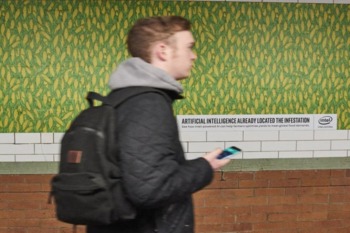 There are almost 253 million visually impaired people globally; 36 million of which are blind. Assistive technology is instrumental in the lives of people living with vision loss and blindness.
There are almost 253 million visually impaired people globally; 36 million of which are blind. Assistive technology is instrumental in the lives of people living with vision loss and blindness.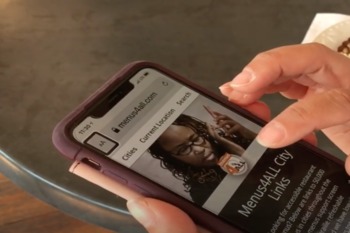 Menus4All is the most extensive collection of accessible restaurant menus. The blind and vision loss community can utilize Menus4All to access more than 50,000 restaurant menus from establishments in 12,000 cities across the country. The menus available on the website can be accessed using smartphones, screen readers, and Braille refreshable displays. All menus support common low vision settings.
Menus4All is the most extensive collection of accessible restaurant menus. The blind and vision loss community can utilize Menus4All to access more than 50,000 restaurant menus from establishments in 12,000 cities across the country. The menus available on the website can be accessed using smartphones, screen readers, and Braille refreshable displays. All menus support common low vision settings.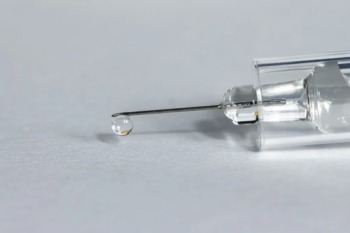 Research published in JAMA Ophthalmology shows that anti-vascular endothelial growth factor (VEGF) injections such as Eylea slowed the progression of diabetic retinopathy. However, the injections were not found to significantly slow vision loss more effectively than standard treatments. The results come from two years worth of data in a four-year study.
Research published in JAMA Ophthalmology shows that anti-vascular endothelial growth factor (VEGF) injections such as Eylea slowed the progression of diabetic retinopathy. However, the injections were not found to significantly slow vision loss more effectively than standard treatments. The results come from two years worth of data in a four-year study. Did you know that women are at a higher risk for some eye diseases than men? The most recent research available shows that women have borne the more significant burden of visual impairment for the majority of conditions studied. April is Women’s Eye Health & Safety Month.
Did you know that women are at a higher risk for some eye diseases than men? The most recent research available shows that women have borne the more significant burden of visual impairment for the majority of conditions studied. April is Women’s Eye Health & Safety Month.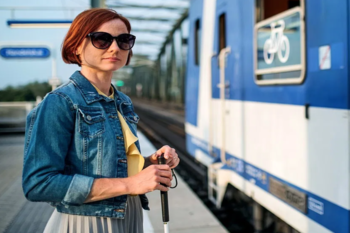 Most seeing people have seen a blind individual wearing sunglasses. Some may have wondered why someone would wear darkened lenses when they can’t see. Blind people wear sunglasses for a reason. Did you know that only 15 percent of people with eye disorders have total blindness? The rest have a limited amount of vision.
Most seeing people have seen a blind individual wearing sunglasses. Some may have wondered why someone would wear darkened lenses when they can’t see. Blind people wear sunglasses for a reason. Did you know that only 15 percent of people with eye disorders have total blindness? The rest have a limited amount of vision.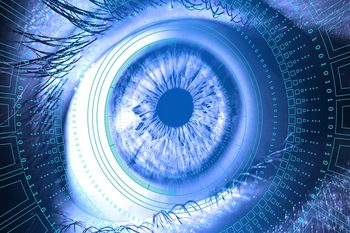 Intel is teaming up with Sankara Eye Foundation and Leben Care to release a comprehensive retinal risk assessment software that can spot retinal failure linked to diabetes much earlier, thus giving eye doctors a better chance of preventing blindness. Spotting the signs of eye problems earlier is the best shot at preventing blindness. The initial results are promising, of more than three thousand patients scanned, 742 were found to be at risk. AI is proving to play a huge role in the future of eye health.
Intel is teaming up with Sankara Eye Foundation and Leben Care to release a comprehensive retinal risk assessment software that can spot retinal failure linked to diabetes much earlier, thus giving eye doctors a better chance of preventing blindness. Spotting the signs of eye problems earlier is the best shot at preventing blindness. The initial results are promising, of more than three thousand patients scanned, 742 were found to be at risk. AI is proving to play a huge role in the future of eye health.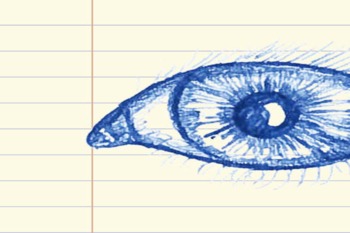 A meta-analysis published in The Lancet Global Health shows that those with severe vision impairment had a higher risk of all-cause mortality compared to those with normal vision. The link between vision impairment, blindness, and mortality is pronounced. Those with even mild vision impairment had a 29% higher risk for mortality compared to people with normal vision.
A meta-analysis published in The Lancet Global Health shows that those with severe vision impairment had a higher risk of all-cause mortality compared to those with normal vision. The link between vision impairment, blindness, and mortality is pronounced. Those with even mild vision impairment had a 29% higher risk for mortality compared to people with normal vision.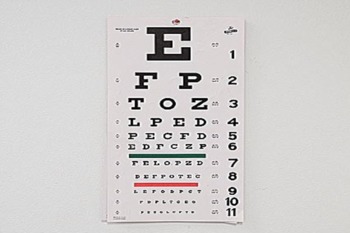 Regular eye check-ups can help in preventing glaucoma-related blindness. With glaucoma, many individuals are unaware that they are losing their vision. Seeing an eye doctor every year can help you identify the problem early and prevent blindness. Neglecting the importance of eye health can have pernicious consequences.
Regular eye check-ups can help in preventing glaucoma-related blindness. With glaucoma, many individuals are unaware that they are losing their vision. Seeing an eye doctor every year can help you identify the problem early and prevent blindness. Neglecting the importance of eye health can have pernicious consequences.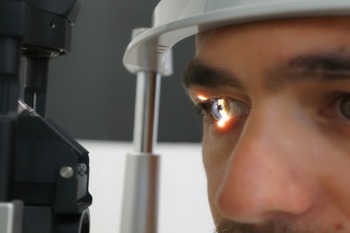 Unmanaged type 1 and type 2 diabetes can lead to severe eye problems, causing diabetic vision loss and blindness. People with diabetes are at risk of diabetic macular edema (DME), the most common cause of blindness in people with diabetic retinopathy. Uncontrolled high blood sugar levels over a long period can damage the blood vessels of the retina.
Unmanaged type 1 and type 2 diabetes can lead to severe eye problems, causing diabetic vision loss and blindness. People with diabetes are at risk of diabetic macular edema (DME), the most common cause of blindness in people with diabetic retinopathy. Uncontrolled high blood sugar levels over a long period can damage the blood vessels of the retina.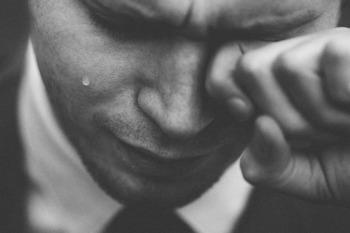 Scientists have used stem cells to grow tear glands and successfully transplanted them into mice. This scientific advancement could help individuals with tear duct conditions such as Sjögren’s syndrome and dry-eye syndrome. Tear gland dysfunction leads to blindness in severe cases. Tears lubricate our eyes; when eyes are too dry, it can cause ulceration of the cornea.
Scientists have used stem cells to grow tear glands and successfully transplanted them into mice. This scientific advancement could help individuals with tear duct conditions such as Sjögren’s syndrome and dry-eye syndrome. Tear gland dysfunction leads to blindness in severe cases. Tears lubricate our eyes; when eyes are too dry, it can cause ulceration of the cornea. Keep safety and energy savings on tap year-round with these simple tips for your home water heater.
Keep safety and energy savings on tap year-round with these simple tips for your home water heater.
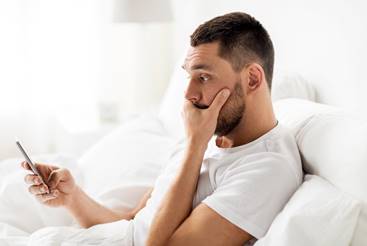 If you have outstanding bills, and you are a CARE or FERA customer, you may be eligible for debt forgiveness through SDG&E’s Arrearage Management Payment (AMP) Plan. This plan offers qualified, current SDG&E customers financial assistance to help reduce past due account balances.
If you have outstanding bills, and you are a CARE or FERA customer, you may be eligible for debt forgiveness through SDG&E’s Arrearage Management Payment (AMP) Plan. This plan offers qualified, current SDG&E customers financial assistance to help reduce past due account balances. Spending more time at home this winter and spring means energy use could be higher and your monthly bill may be, too. SDG&E has some helpful tips on ways to save on your energy bill. We know that every little bit helps, especially now.
Spending more time at home this winter and spring means energy use could be higher and your monthly bill may be, too. SDG&E has some helpful tips on ways to save on your energy bill. We know that every little bit helps, especially now.
 The COVID-19 pandemic has affected the lives of billions of people across the globe. For more than a year, the healthcare system has been severely bogged down, making it extremely difficult for individuals to receive eye disease treatments. COVID-19 affects glaucoma patients especially, and they are at risk of vision loss and blindness without access to essential treatments. A new survey shows that many people have not received a professional diagnosis for the condition; those with a diagnosis have struggled to attend medical appointments. Karen Osborn, Chief Executive Officer of Glaucoma UK, said:
The COVID-19 pandemic has affected the lives of billions of people across the globe. For more than a year, the healthcare system has been severely bogged down, making it extremely difficult for individuals to receive eye disease treatments. COVID-19 affects glaucoma patients especially, and they are at risk of vision loss and blindness without access to essential treatments. A new survey shows that many people have not received a professional diagnosis for the condition; those with a diagnosis have struggled to attend medical appointments. Karen Osborn, Chief Executive Officer of Glaucoma UK, said: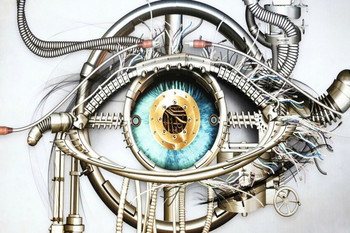 Technological advancements have led to the development of bionics for those with lost limbs or hearing impairments. In the near future, we could see the use of bionic corneas for curing blindness. There are several projects underway to develop a functional bionic cornea.
Technological advancements have led to the development of bionics for those with lost limbs or hearing impairments. In the near future, we could see the use of bionic corneas for curing blindness. There are several projects underway to develop a functional bionic cornea. Retinal dystrophy affects as many as two million people globally. There are no effective treatments available for the common cause of blindness. However, genes therapy could one day be used to treat retinal dystrophy. Researchers discovered a new blindness gene, IFT122, in canines with retinal dystrophy, which could lead to novel treatments for dogs and people.
Retinal dystrophy affects as many as two million people globally. There are no effective treatments available for the common cause of blindness. However, genes therapy could one day be used to treat retinal dystrophy. Researchers discovered a new blindness gene, IFT122, in canines with retinal dystrophy, which could lead to novel treatments for dogs and people.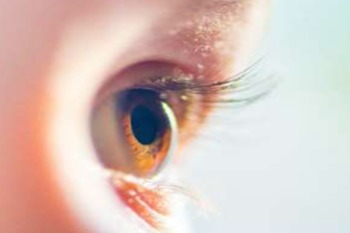 Last Sunday, Feb. 28, was World Rare Diseases Day. The company Novartis, the maker of ophthalmological treatments, released a video that seeks to show the general public a day in the life of a blind child. The animated film, “He who did not see the stars,” focuses on a rare ophthalmic disease, such as Hereditary retinal dystrophies (HRD). Novartis states:
Last Sunday, Feb. 28, was World Rare Diseases Day. The company Novartis, the maker of ophthalmological treatments, released a video that seeks to show the general public a day in the life of a blind child. The animated film, “He who did not see the stars,” focuses on a rare ophthalmic disease, such as Hereditary retinal dystrophies (HRD). Novartis states:
